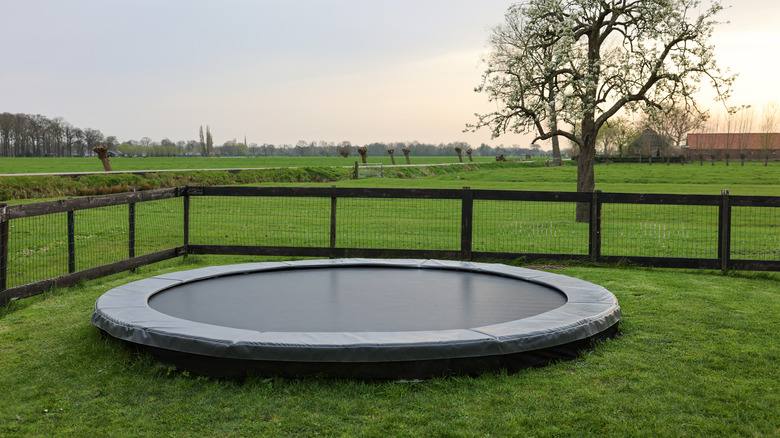When 36-year-old nurse Jodie Wright jumped into a foam pit at a Flip Out trampoline park in England, she screamed in pain. She injured her leg to the point that she needed screws in her leg, and she told WalesOnline that she might need additional surgery.
“Trampoline parks are still a real danger,” Wright said. “I am still in pain most days and have been told my symptoms are likely to be for life.”
Two men who ran another Flip Out trampoline park were fined and sentenced to 250 hours of community service after 11 people broke their backs and 270 suffered other injuries, according to the BBC. Many of these injuries were children. The court decided that the men neglected to follow the proper safety protocols.
Although sales of home trampolines have waned over the last few decades, trampoline parks like Flip Out are becoming more popular, with more than 1,500 trampoline parks worldwide (per Regiondo). The popularity of trampolines and trampoline parks has made the American Academy of Pediatrics nervous. A 2012 article in Pediatrics highlighted the safety concerns of trampolines, particularly when multiple jumpers are involved. More extreme injuries can occur when people attempt risky moves such as somersaults and flips. In an exclusive interview with Health Digest, Dr. Patricia Schmaedeke, an urgent care physician at Watson Clinic in Lakeland, Florida, weighs in on trampoline injuries.
Common types of injuries on a trampoline
“I have not seen a plethora of trampoline injuries, but in urgent care, we have seen radial (wrist) fractures, back strains/spasms, ankle sprains, and head injuries,” said Schmaedeke.
A 2022 article in Orthopaedics and Traumatology: Surgery & Research investigated how many children (up to 16 years) visited a pediatric emergency unit for 10 months. A little more than 1% of the injuries were due to trampolines. Among those injuries, more than 16% were considered to be “severe,” meaning they required surgery. The predominant fractures were near the elbow and wrist.
Pediatric emergency specialist Dr. Ee Tay from NYU Langone’s Hassenfeld Children’s Hospital told Today that she doesn’t permit her children to jump on trampolines because they’re unpredictable. “It depends on the weight of the child, how hard they can bounce, how high they can jump, if there’s another child next to them,” she said. Schmaedeke adds that when other jumpers are on the trampoline, there’s a higher risk of a collision.
Extreme injuries from a trampoline
Trampoline injuries can sometimes be more severe. Board-certified family medicine physician Dr. Mike Varshavski winces as he points out some extreme injuries caused by trampolines in his YouTube video. A 4-year-old boy broke his femur when a father caused a double bounce at a trampoline park. A father was paralyzed after injuring his neck on a trampoline and spent a long time learning to eventually walk on his own. Flips on a trampoline can have people landing incorrectly and injuring their spine.
Many children are injured as bystanders when other people perform stunts on trampolines. “Whenever there are multiple people on a trampoline, I get nervous, especially if there’s a size mismatch,” he said.
Mother Nature can cause some injuries on a home trampoline. A gust of wind flipped a trampoline on its side, tossing two young boys onto the hard cement. One of the boys fractured his pelvis and elbow. Home trampolines stored outside can suffer wear and tear from the elements and literally tear.
Using trampolines safely
The American Academy of Orthopaedic Surgeons developed a position statement about the nature of injuries due to trampolines. Although it doesn’t advise against using trampolines, the organization developed several trampoline safety guidelines to reduce the number and severity of injuries. Competent adults should supervise the use of trampolines to ensure safety measures are followed.
High-risk movements such as somersaults should only be done under supervision and using specific equipment such as a harness. Only one person should be allowed on the trampoline at a time to avoid any collisions. All equipment should be checked for any damage while ensuring padding isn’t worn. Safety nets don’t prevent injury since most of the injuries occur on the jumping surface. Trampolines are safer if the jumping surface is on the ground. Children under the age of 6 are advised against using trampolines, so take away any ladders or possible mounts so children can’t access the trampoline.
Schmaedeke says older adults are also susceptible to injury on a trampoline. Those with degenerative joint disease or osteoporosis should avoid trampolines altogether.



